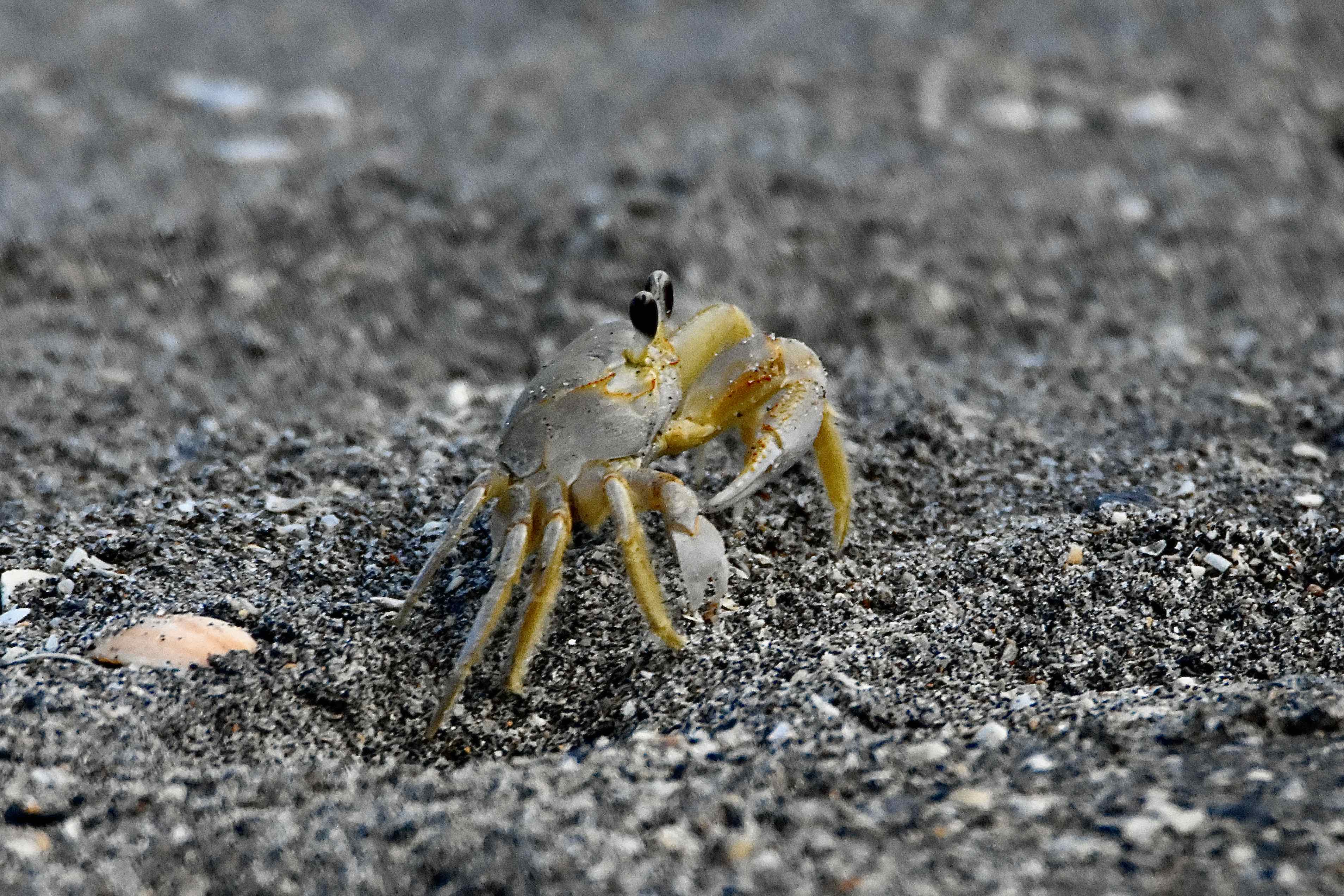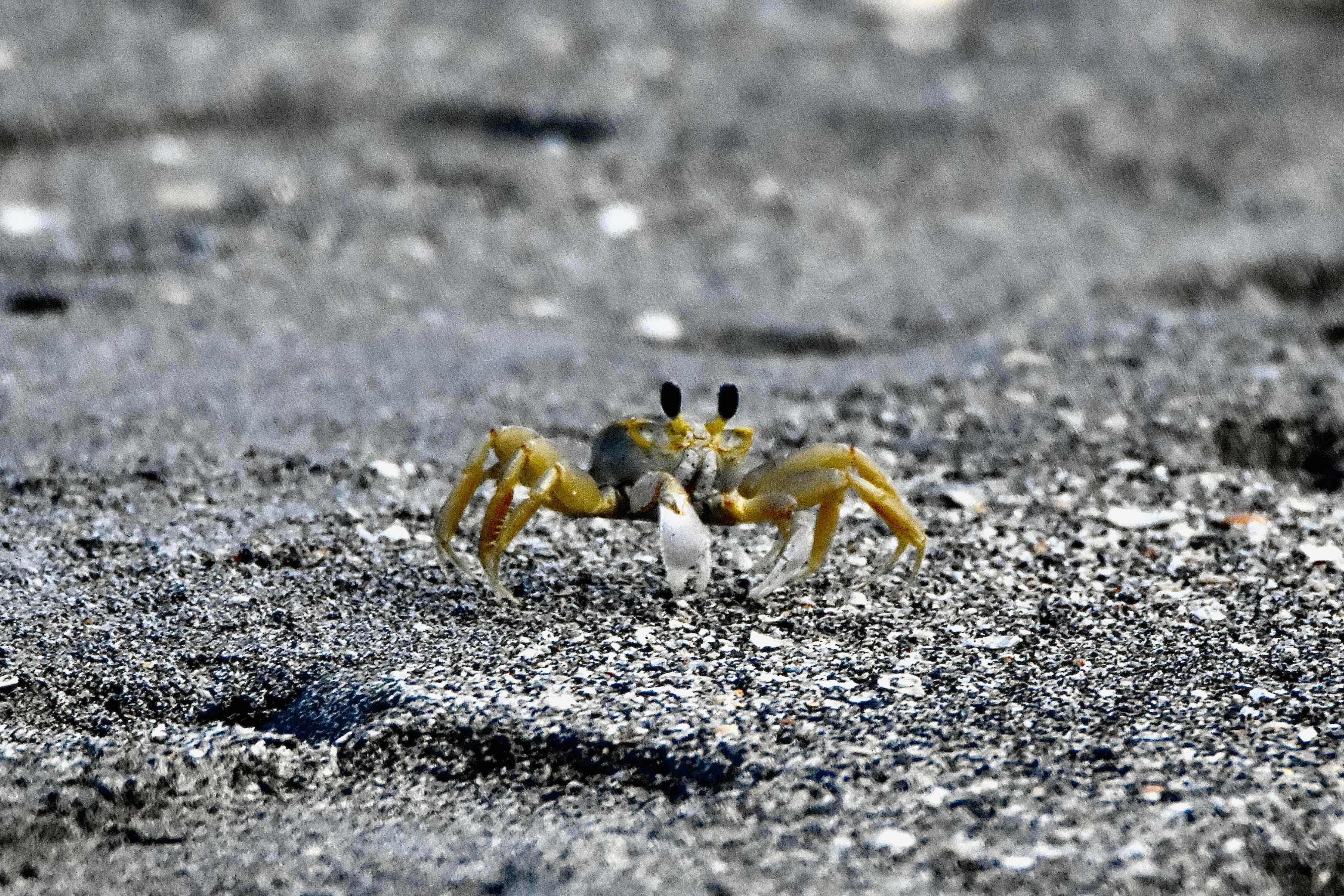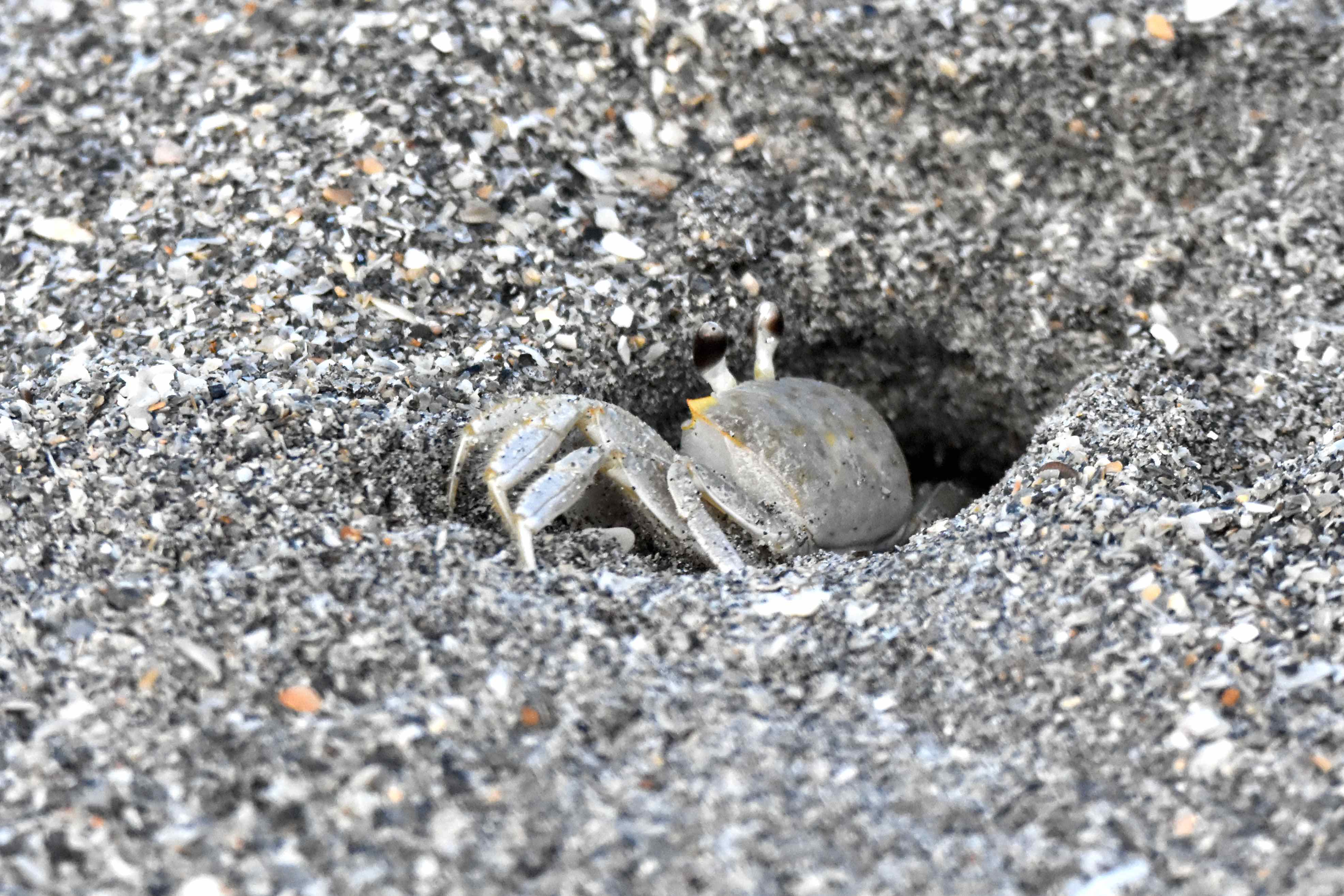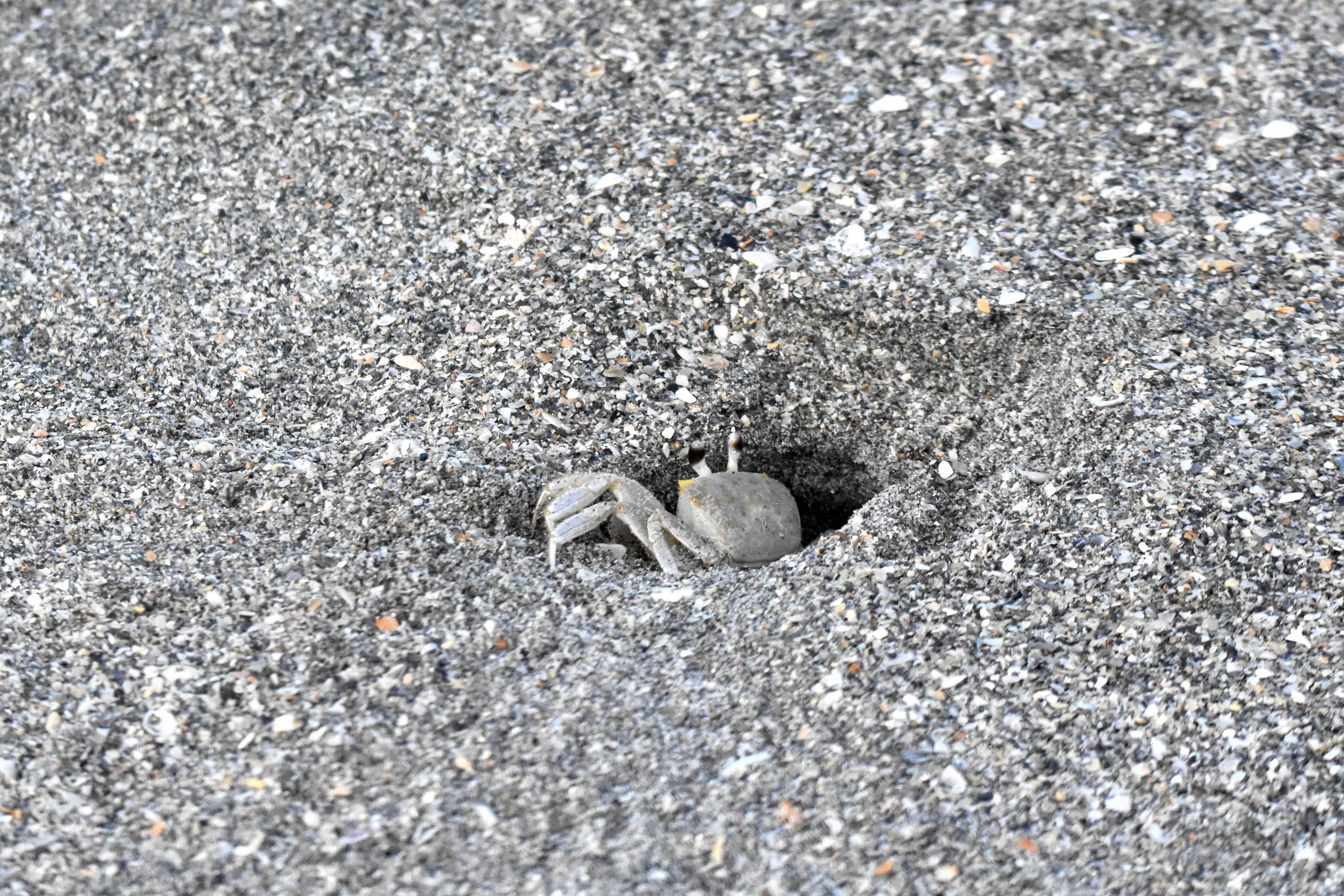
Atlantic ghost crab, photographed at Hobe Sound National Wildlife Refuge, Hobe Sound, Martin County, in September 2016.
Cute crab seems almost oxymoronic, but this guy, the Atlantic ghost crab, with its big black eyes and scurrying manner, might be the exception. But we won't go so far as to call him cuddily.
Scientifically, Atlantic ghost crabs are known as Ocypode quadrata, and they're found over a good chunk of the Atlantic seaboard from Rhode Island to Brazil, including Florida. They're also found along the Gulf, in the Caribbean and on Bermuda. Their larvae occasionally stray as far north as the waters off Massachusetts, but adults stay to the south. Worldwide, there about 20 species of ghost crabs, but our guy is the only one found on the East Coast. They are members of Ocypodidae, the family of semiterrestrial crabs.
They are small, about two inches across the back when fully grown. They are gray-white, with touches of light brown, and able to change colors somewhat to match their sandy surrounding. This, along with their nocturnal habits, make them difficult to spot. Like ghosts. Which also helps keep them out of the maws of predators.
Ghost crabs live on oceanfront and estuarine (places where fresh water meets salt water) beaches in the area between the water line and the dunes. There, they dig burrows as deep as four feet. In summer, during the hottest part of the day, they'll close the burrow opening with sand to stay cool. In colder climes, they'll remain within their burrows during winter and hibernate. Their eyes sit atop large stalks; their claws are unequal in size and their walking legs are relatively long. The guys tend to be larger than the girls of the species.
They are relatively independent of the water, returning to the ocean only occasionally (thus semiterrestrial). They can extract from sand the moisture they need to wet their gills and breath. Fine hairs on the base of their legs wick water onto their gills. The ocean still plays an important role in their lifecycle — females will enter the water frequently to keep their eggs wet and eventually to deposit them in the surf. Ghost crabs live up to three years. After hatching, they go through six distinct stages before maturing into adults. Both males and females are able to reproduce after one year. Mating occurs throughout the year. Females will carry their fertilized eggs under their body until they're ready to deposit them in the ocean.
So what makes a good meal for a ghost crab? Depends on where they live. They forage at night, hunting and scavenging as far as 1,000 feet from their burrows. Crabs living on oceanfront beaches will eat certain clams and crabs, while those living on more protected beaches will eat loggerhead turtle eggs and hatchlings. They'll also eat carrion — dead animals. In any regard, their dining habits play a critical role in beach ecosystems.
Ghost crabs have few enemies, but the list includes raccoons, burrowing owls and sundry gulls. Although we don't eat ghost crabs, we are threats. Beachfront development, beach renourishing and off-road vehicles can take a toll on ghost crabs. Their taste for sea turtles sometimes puts them in our cross hairs.
Overall, however, the ghost crab population is pretty good shape.



